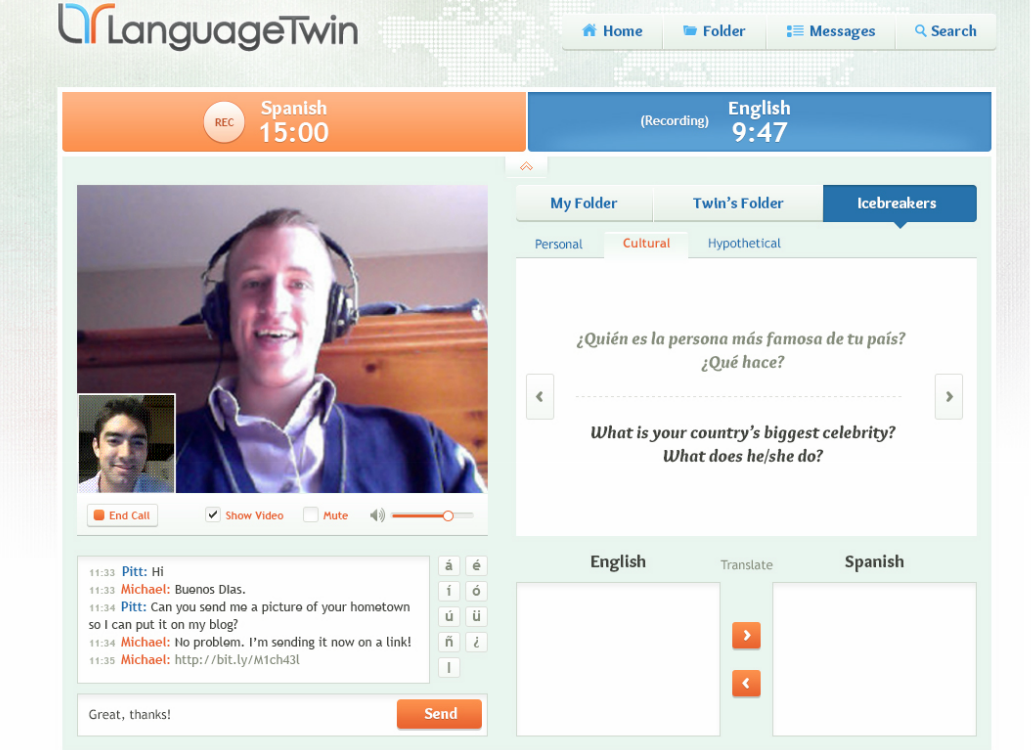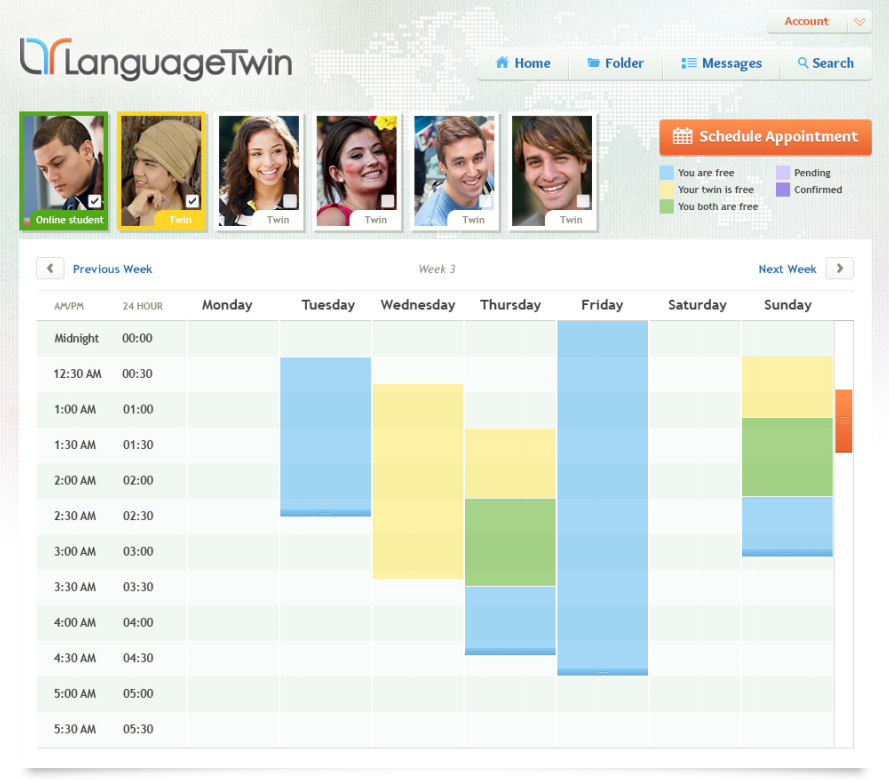Learning a language is never easy. One thing that’s usually missing in the way students learn a new language is the ability to use their new skills while talking to a native speaker. LanguageTwin, a startup I met at the Willamette Angel Conference in Corvallis, Ore., last week, aims to do just that. The service brings together language learners for peer-to-peer interactions to give students the opportunity to apply what they’ve learned in the classroom while having a conversation or acting out real-life scenarios.
It’s worth noting that this is not a freemium service. LanguageTwin only plans to work with colleges and K-12 schools right now and will charge these schools a $25-$35 fee per term (or a slightly discounted price per year). The idea here is that the service will pair students from two different countries and then allow them to talk to each other over video chat. Right now, the team is focusing on students who want to learn Spanish (with French, German, Mandarin and other languages on the roadmap) and has run a number of tests with 5,000 students from over 100 universities in the U.S., Spain, Mexico, Colombia, Panama, Chile, Costa Rica and a number of other countries.
As the name implies, the original idea behind LanguageTwin was to assign a “twin” to every student in the system. Say you are learning Spanish. LanguageTwin would set you up with a student in a Spanish-speaking country who is trying to learn English. The problem with this, as the founders told me, is that it’s not easy to coordinate the schedules of two students living in different parts of the world, and students shouldn’t be penalized if their twin decides to forget about a meeting or turns out to be flaky. The system the team now uses is more flexible than the original scheme and allows users to find new ‘twins’ every time they use the system.
The twist here is that teachers can use the system to assign students to use LanguageTwin for a set number of minutes every day or week. All of the chats are recorded and teachers can play them back at their leisure. Some teachers who have used the system, the company’s co-founder Michael Lucia told me, also pick one random LanguageTwin session from their students in place of an oral exam.
The video chat, which is at the core of the service’s platform, also features text chat capabilities, a translation tool and, most importantly, a folder with assignments and a few ice-breaker questions to get less-structured conversations going. Professors can, of course, upload their own content to the service.
As Lucia told me, it’s this framework around the chats (plus the ability to record them) that makes LanguageTwin very different from just using Skype to start a conversation.


